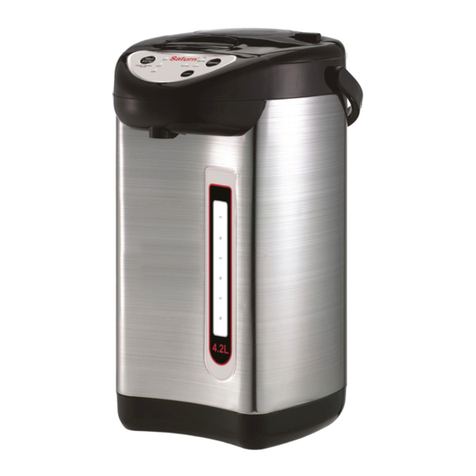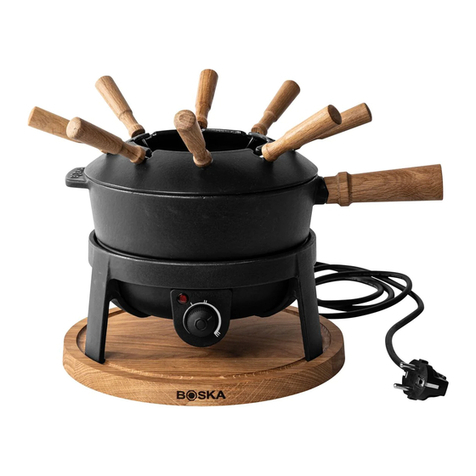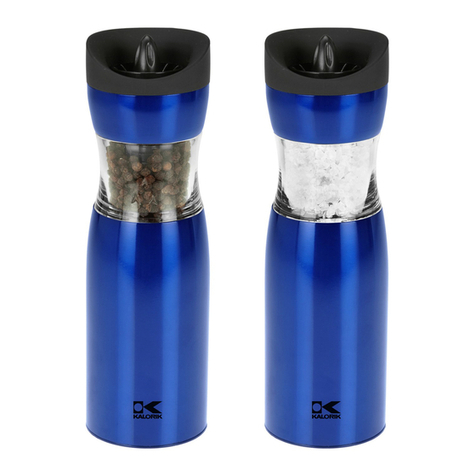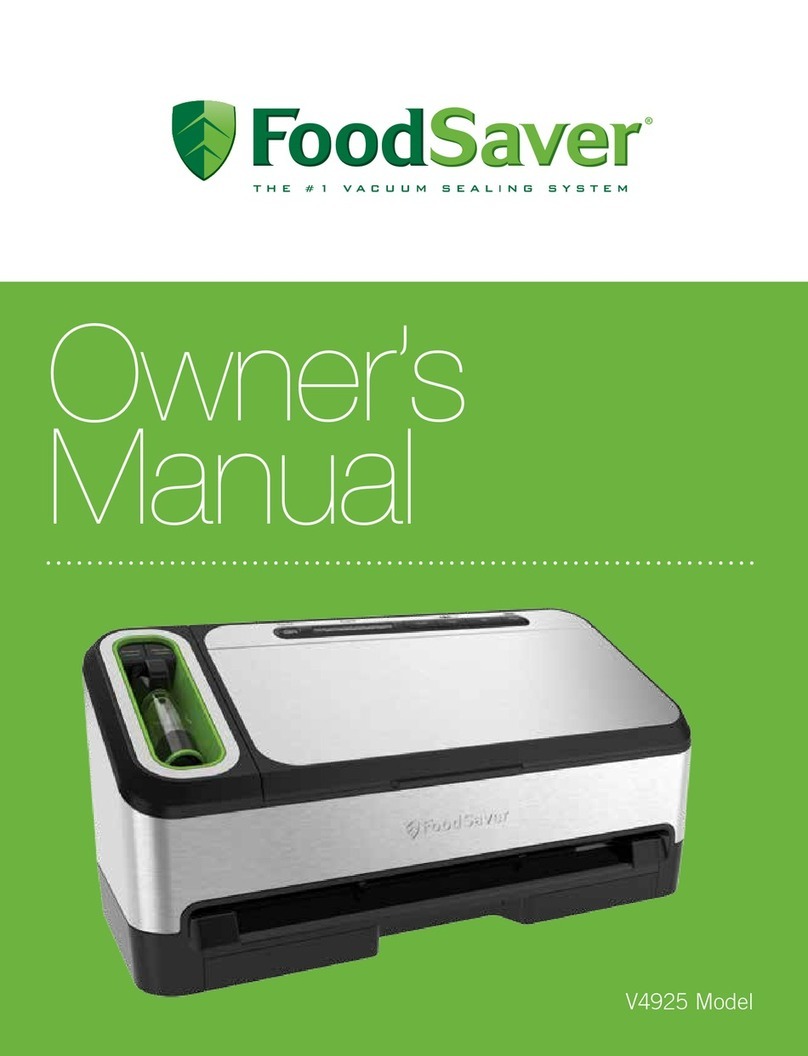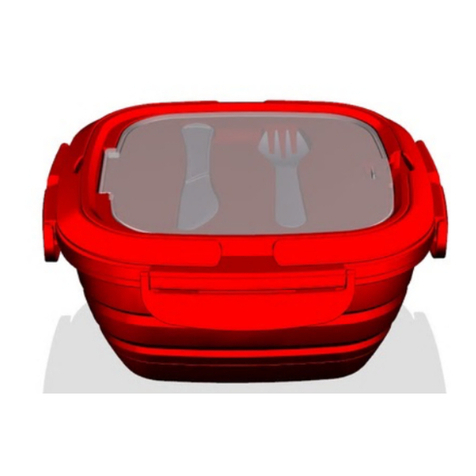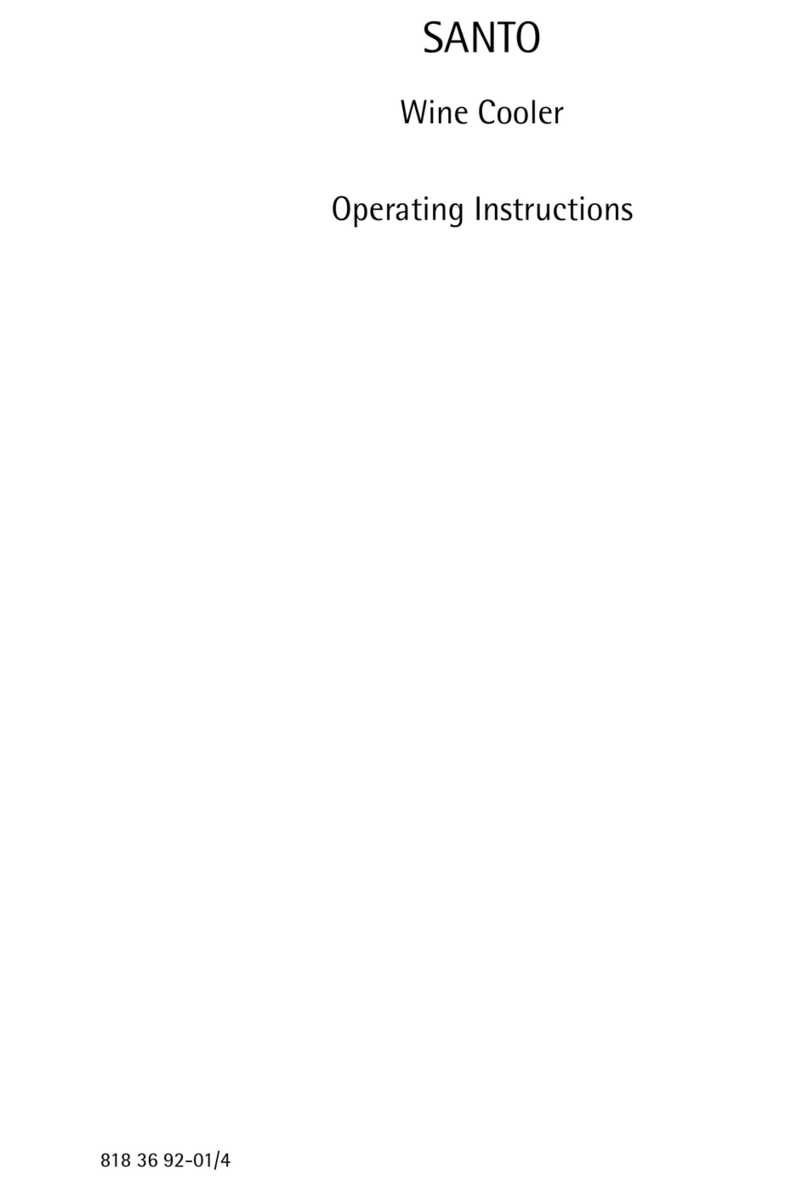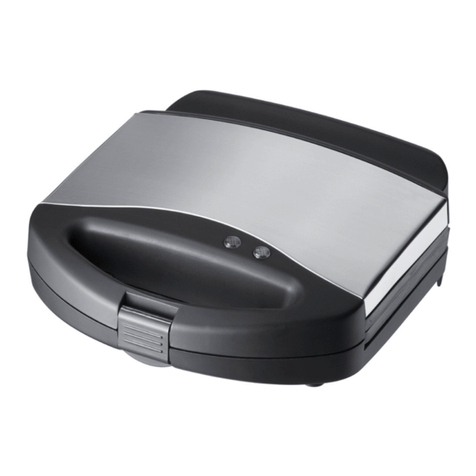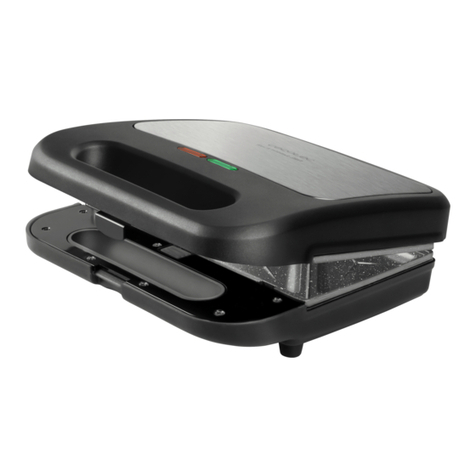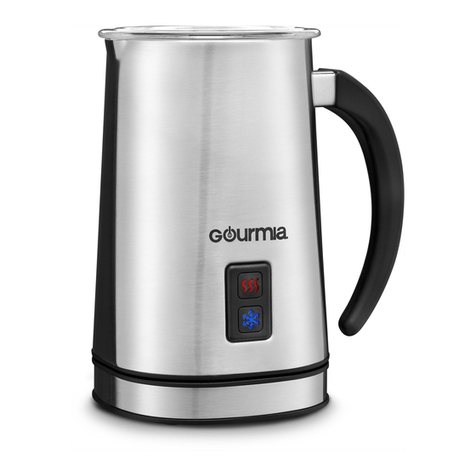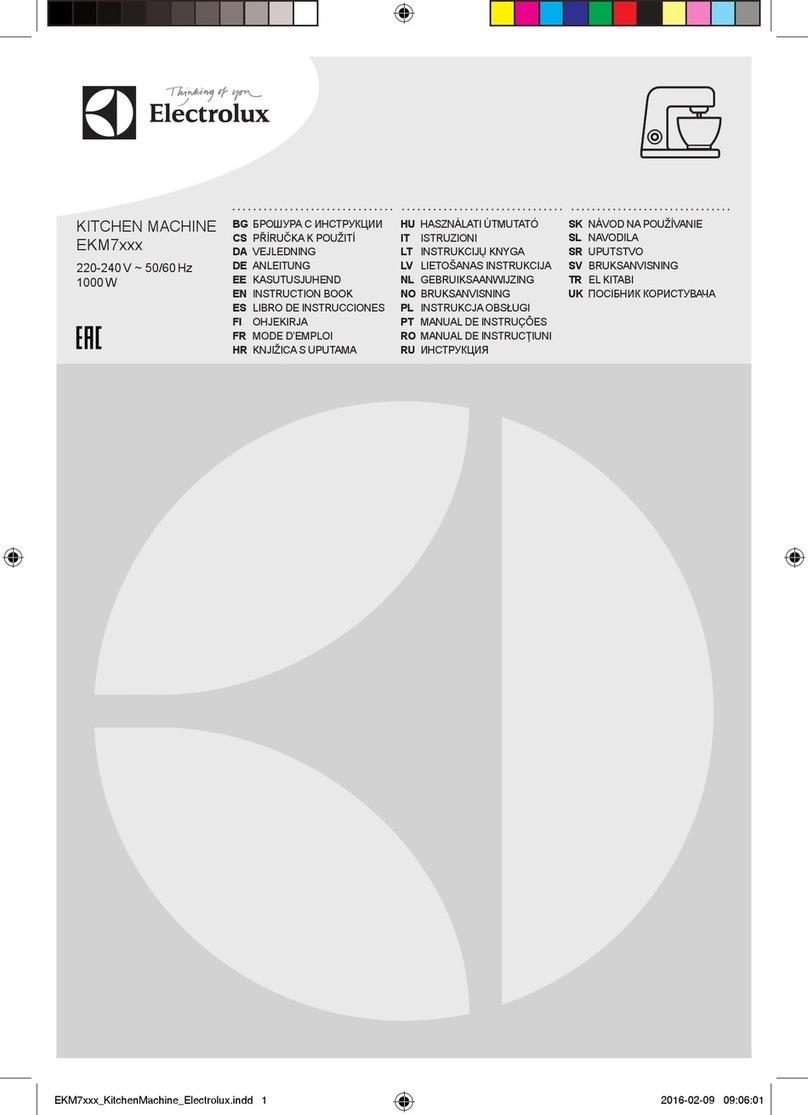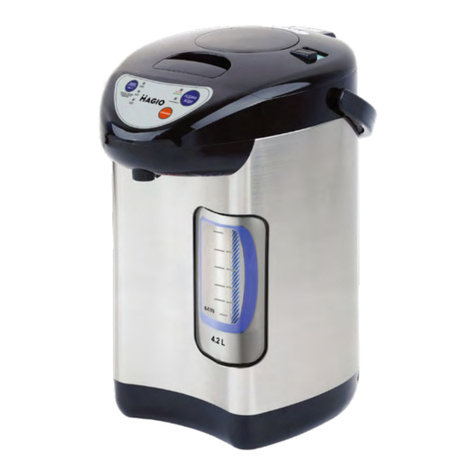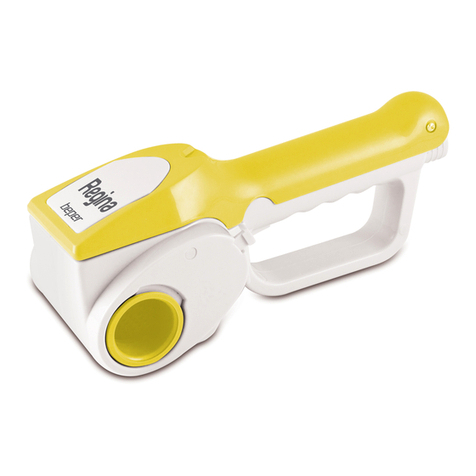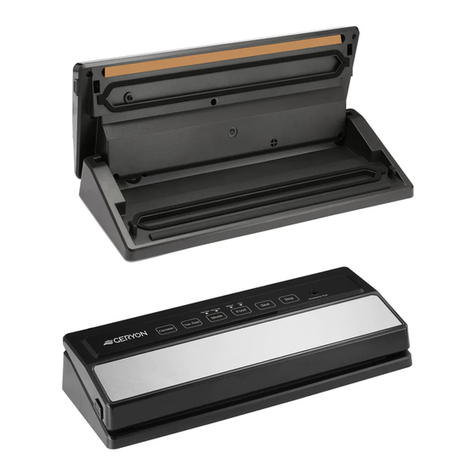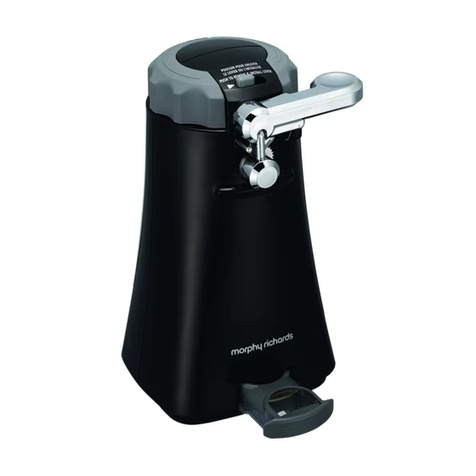Roller Grill RBG 80 Operation manual

Notice d’utilisation et d’insttddddqsdsq
Notice d’utilisation et d’installation (FR)
RBG 80 / RBG 120 / RBG 200 / RBG 30
UTILISATION
Présentation de l’appareil
Les rôtissoires Gaz permettent de rôtir par rayonnement infrarouge (1050°C) volailles,
gibiers, gigots… Elles sont disponibles en 4 versions (capacité de 8 à 30 poulets) et sont
équipées d’un plat ramasse jus.
Ces appareils sont à usage professionnel et doivent donc être utilisés par du personnel
qualifié. Ils doivent être installés conformément aux réglementations en vigueur par un
installateur qualifié, et dans un local suffisamment aéré pour empêcher la formation de
concentration inadmissible de substances nocives pour la santé dans le local dans lequel il est
installé.
La plaque signalétique se situe à l’arrière de l’appareil.
Dimensions et capacité
Appareil
Dimensions
Poids
Nombre
De broches
Capacité
(nb de poulets)
RBG 80
940x445x760mm
30 Kgs
2
8
RBG 120
940x445x955mm
40 Kgs
3
12
RBG 200
940x445x1250mm
72 Kg
5
20
RBG 30
1345x480x1285mm
120 Kg
5
30
Caractéristiques techniques
Appareil
Débit
calorifique
Nombre des
radiants
RBG 80
11kW
2
RBG 120
16.5kW
3
RBG 200
27.5 kW
5
RBG 30
38 kW
10
Fonctionnement
Les appareils sont équipés de 2 à 5 moteurs régulant chacun une broche.
Allumage : Appuyer sur le bouton du robinet
Tourner le robinet sur la position étoile
Approcher une flamme près de la veilleuse ou du bruleur.
Maintenez le robinet appuyé pendant environ 5 secondes
La veilleuse ou le bruleur reste alors allumée
Tourner le robinet sur la position grande flamme
Un thermocouple coupe l’alimentation en gaz en cas d’extinction d’un radiant.
Il est recommandé d’éteindre le brûleur lorsque la broche correspondante est vide de toute
pièce à cuire, afin d ‘éviter un échauffement excessif de la vitre et de sa poignée.
Entretien
Votre appareil doit être régulièrement nettoyé à l’aide d’une éponge humide.
Ne nettoyer pas votre appareil sous un jet d’eau : les infiltrations risqueraient de
l’endommager.
Pour un meilleur service, nous vous conseillons un entretien tous les 6 mois à faire
effectuer par un installateur qualifié.
Votre appareil peut fonctionner avec différents types de gaz. Pour effectuer l’adaptation il
est nécessaire de faire appel à un installateur qualifié.
Installation
L’appareil doit être installé conformément aux réglementations en vigueur, dans un local
suffisamment aéré.
Les pièces scellées lors de la fabrication ne doivent pas être déprotégées par l’installateur
ou l’utilisateur.
Le débit d’air neuf requis pour l’alimentation en air de combustion est de :
RBG 80 22m3/h
RBG 120 33m3/h
RBG 200 55 m3/h
RBG 30 76 m3/h
Note : Les parois latérales de votre appareil ne doivent pas être situées près d’un mur ou
d’une cloison constituée d’un matériau combustible ou si ce n’est pas le cas, le recouvrir
d’un matériau bon isolant thermique.
La distance de 30cm par rapport à une cloison est jugée suffisante.

Raccordement gaz
Les appareils fonctionnent aux gaz suivants : Butane G30, Propane G31, gaz naturel
G20/G25 et pour toutes les pressions rencontrées sur les réseaux de gaz. Le raccordement se
fait par un filetage G 1/2.
Les appareils sont livrés d’origine avec un injecteur Butane/Propane.
Raccorder l’appareil à la canalisation d’amenée de gaz en interposant une vanne de barrage
permettant d’isoler l’appareil du reste de l’installation. Vérifiez que les réglages
correspondent à la nature et à la pression du gaz du reste de l’installation.
Vérifiez la pression d’alimentation lorsque tous les brûleurs sont allumés, à l’aide d’un
manomètre. Celle-ci doit être égale aux indications de la plaque signalétique.
Conditions générales d’installation
L’installation et l’entretien de l’appareil doivent être effectués conformément aux textes
réglementaires et règles d’art en vigueur, notamment :
Règlement de sécurité contre l’incendie et la panique dans les établissements recevant du
public :
Prescriptions générales
1° Pour tous les appareils :
Article GZ Installations aux gaz combustibles et hydrocarbures liquéfiés
2° Ensuite, suivant l’usage :
Article CH Chauffage, ventilation, réfrigération, conditionnement d’air et
production de vapeur d’eau chaude sanitaire.
Article GC Installations d’appareils destinés à la restauration ;
Prescriptions particulières à chaque type d’établissements recevant du public
(Hôpitaux, magasins, etc…)
Changement de gaz (voir tableau ci-contre)
Important : Ne pas repercer les injecteurs.
Les injecteurs se démontent et remontent à l’aide d’une clé à œil de 8.
Lors du passage de G30/G31 à G20/G25 il faut procéder au réglage du débit réduit. Pour se
faire, il faut dévisser la vis By Pass de 3 tours.
Dans le cas inverse visser la vis au maximum et retirer la bague d’air.
Pays de
Destination
Catégorie
Gaz
Pressions
Injecteur
RBG80-120-
200
Injecteur
RBG 30
Bague d’air
France
II2E+3+
II2E+3B/P
II2E+3P
G20/G25
G30/G31
G20/G25
G30
G31
G20/G25
G31
20/25
28-30/37
20/25
50
50
20/25
50
175
120
175
120
120
175
120
150
100
150
85
90
150
90
Sans
Sans
Sans
Sans
Sans
Sans
Sans
Allemagne
II2ELL3B/
P
G20
G25
G30
G31
20
20
50
50
175
175
120
120
150
160
85
90
Sans
Sans
Sans
Sans
Autriche
II2H3B/P
G20
G30
G31
20
50
50
120
120
120
150
85
90
Sans
Sans
Sans
Belgique
I2E+
I3+
G20/G25
G30/G31
20/25
28-30/37
175
120
150
100
Sans
Sans
Suède/Danemark/
Finlande
II2H3B/P
G20
G30/G31
20
28-30/30
175
120
150
100
Sans
Sans
Espagne
II2H3+
II2H3P
G20
G30/G31
G20
G31
20
28-30/37
20
50
175
120
175
120
150
100
150
90
Sans
Sans
Sans
Sans
Luxembourg
II2E3B/P
II2E3+
G20
G30
G31
G20
G30/G31
20
50
50
20
28-30/37
175
120
120
175
120
150
85
90
150
100
Sans
Sans
Sans
Sans
Sans
Pays-bas
II2L3B/P
II2L3P
G25
G30/G31
G25
G31
25
28-30/30
25
50
175
120
175
120
150
100
150
90
Sans
Sans
Sans
Sans
Norvège
I3B/P
G30/G31
28-30/30
120
100
Sans
Islande/Grèce/Royaume
-Uni/Italie/Portugal
II2H3+
G20
G30/G31
20
28-30/37
175
120
150
100
Sans
Sans
Raccordement électrique
Le moteur électrique doit être raccordé au réseau 220/230V monophasé.
Marquages
La plaque signalétique se situe au dos de l’appareil
En cas de changement de gaz, changez l’étiquette de réglage fournie avec la pochette.

Instruction for use and installation
RBG 80 / RBG 120/ RBG 200 / RBG 30
USE
Description of the appliance
Gas rotisseries are designed for roasting poultry, game, joints, etc. using infrared radiation
(1050°C). They are available in 4 models (8 to 30 chickens capacity) and are fitted with a
drip tray.
These appliances are for professional use and must therefore be used by qualified personnel.
They must be installed in accordance with current regulations by a qualified installer and in a
sufficiently well ventilated location.
The identification plate is located on the back of the appliance.
Dimensions and capacity
Appliance
Dimensions
Weight
Number of
Spits
Capacity
(no. Of chickens)
RBG 80
940x445x760mm
30 Kgs
2
8
RBG 120
940x445x955mm
40 Kgs
3
12
RBG 200
940x445x1250mm
72 Kg
5
20
RBG 30
1345x480x1285mm
120 Kg
5
30
Technical data
Appliance
Heat
output
Number of radiant
Burners
RBG 80
11kW
2
RBG 120
16.5kW
3
RBG 200
27.5 kw
5
RBG 30
38 kw
10
Operation
The appliances are fitted with 2 to 5 motors which each drive a spit.
Lighting : Press the knob and turn it on the star position
Place a flame close to the pilot light or the burner
Keep the knob pressed in for about 5 seconds
The pilot light or the burner will then remain lit
Turn the knob on the big flame position
A thermocouple cuts off the gas supply if one of the radiant burners goes out.
It is recommended to turn off the burner when the spit support is empty, to avoid a high
temperature on the door.
Care and maintenance
Your appliance should be cleaned regularly using a damp sponge.
Do not clean your appliance under running water: water entering the system might damage
it.
For better and long lasting performance, regular checking carried out by qualified installer
are recommended.
Your appliance can operate on the various types of liquid petroleum gas. To change from
one gas to another requires the intervention of qualified installer.
Installation
The appliance must be installed in accordance with current regulations in a sufficiently
well ventilated location.
The fresh airflow required providing air for combustion is:
RBG 80 22m3/h
RBG 120 33m3/h
RBG 200 55 m3/h
RBG 30 76 m3/h
NB: The side panels of your appliance must not be placed next to a wall or partition
made from combustible material; otherwise, they must be covered in an effective heat
insulating material.
A distance of 30cm from the partition is deemed sufficient.

Gas connection
The appliances operate on the following gases: Butane G30, Propane G31, natural gases
G20/G25 and at all pressures encountered on main gas. Connection is with a G 1/2 thread.
The appliances are supplied from the factory with a Butane/Propane.
Connect the appliance to the gas supply pipe, interposing a stop valve, which enables the
appliance to be isolated from the rest of the installation. Check that the settings correspond to
the type and pressure of the gas distributed in the installation.
Check the supply pressure with all the burners alight using a gas manometer. This should be
the same as indicated on the identification plate.
General conditions for installation
The installation and the maintenance of the appliance must be carried out in accordance with
the current regulations and rulebook, in particular:
Regulations for the prevention of fire and panic in establishments when the public is
admitted.
General provisions:
1° For all appliances:
Article GZ Installations using combustible gases and liquid hydrocarbons
2° Next, depending on the use:
Article CH Heating, ventilation, refrigeration, air conditioning and the
production of steam from hot water in sanitary installations.
Article GC Installation of appliances to be used for catering. Specific
provisions for each type of establishment to which the public is admitted (hospitals, shops,
etc…).
Changing the gas
Important: Do not rebore the injectors.
The injectors are removed and replaced using a 8 ring spanner.
To change the gas from G30/G31 to G20/G25 you must adjust the low position. For this,
unscrew the By Pass screw of 3 rounds. In the other case, screw the By Pass at the
maximum and take off the air collar.
Country of
Destination
Category
Gas
Pressures
Injecteur
RBG80-120-
200
Injector
RBG 30
Air collar
France
II2E+3+
II2E+3B/P
II2E+3P
G20/G25
G30/G31
G20/G25
G30
G31
G20/G25
G31
20/25
28-30/37
20/25
50
50
20/25
50
175
120
175
120
120
175
120
150
100
150
85
90
150
90
No
No
No
No
No
No
No
Germany
II2ELL3B/P
G20
G25
G30
G31
20
20
50
50
175
175
120
120
150
160
85
90
No
No
No
No
Austria
II2H3B/P
G20
G30
G31
20
50
50
120
120
120
150
85
90
No
No
No
Belgium
I2E+
I3+
G20/G25
G30/G31
20/25
28-30/37
175
120
150
100
No
No
Sweden/Denmark/
Finland
II2H3B/P
G20
G30/G31
20
28-30/30
175
120
150
100
No
No
Spain
II2H3+
II2H3P
G20
G30/G31
G20
G31
20
28-30/37
20
50
175
120
175
120
150
100
150
90
No
No
No
No
Luxembourg
II2E3B/P
II2E3+
G20
G30
G31
G20
G30/G31
20
50
50
20
28-30/37
175
120
120
175
120
150
85
90
150
100
No
No
No
No
No
Netherlands
II2L3B/P
II2L3P
G25
G30/G31
G25
G31
25
28-30/30
25
50
175
120
175
120
150
100
150
90
No
No
No
No
Norway
I3B/P
G30/G31
28-30/30
120
100
No
Iceland/Greece/United
kingdom/Italy/Portugal
II2H3+
G20
G30/G31
20
28-30/37
175
120
150
100
No
No
Electrical connection
The electric motor must be connected to the single-phase 220/230 V mains supply
Maker’s name
The identification plate is located on the back of the appliance
If the gas is changed, change the setting label.

Manual de utilización y de instalación (ES)
RBG 20 / RBG 30
UTILIZACIÓN
Presentación del aparato
Los asadores a gas permiten asar por radiación infrarroja (1050ºC) aves, carnes de caza,
piernas, etc. Están disponibles en 2 versiones (capacidad de 20 ó 30 pollos) y están equipados
de un plato para la recolección de jugos.
Estos aparatos son de uso profesional y por lo tanto se deben instalar conforme a las
reglamentaciones en vigor por un instalador cualificado, y en un local suficientemente
ventilado para impedir la formación de una concentración inadmisible de substancias nocivas
para la salud en el local en el cual está instalado.
La placa de señalización se sitúa en la parte trasera del aparato.
Dimensiones y capacidad
Aparato
Dimensiones
Peso
Cantidad de
espetones
Capacidad (cant. De
pollos)
RBG 20
940x445x1250mm
72 Kg
5
20
RBG 30
1345x480x1285mm
120 Kg
5
30
Características técnicas
Aparato
Caudal calorifico
Cantidad de radiantes
RBG 20
19 kw
5
RBG 30
38 kw
10
Funcionamiento
Los aparatos están equipados de 5 motores que regulan cada uno un espetón.
Encendido: Pulsar el botón del grifo
Girar el grifo a la posición de llama grande
Acercar una llama cerca del quemador
Mantener el grifo pulsado aproximadamente 5 segundos
El quemador queda entonces encendido
Un termopar corta la alimentación de gas en caso de extinción de un radiante.
Se recomienda apagar el quemador cuando el espetón correspondiente está vacío de toda
pieza por cocer con el fin de evitar un calentamiento excesivo del vidrio y de su
empuñadura.
Mantenimiento
Su aparato se debe limpiar regularmente con la ayuda de una esponja húmeda.
No limpiar su aparato con un chorro de agua: las infiltraciones corren el riesgo de dañarlo.
Para un mejor servicio, le recomendamos un mantenimiento cada 6 meses que deberá
efectuar un instalador cualificado.
Su aparato puede funcionar con diferentes tipos de gas. Para efectuar la adaptación, es
necesario recurrir a un instalador cualificado.
Instalación
El aparato se debe instalar conforme a las reglamentaciones en vigor, en un local
suficientemente ventilado.
Las piezas selladas durante la fabricación no deben ser desprotegidas por el instalador o el
usuario.
El caudal de aire nuevo requerido para la alimentación de aire de combustión es de:
RBG 20 38 m3/h
RBG 30 76 m3/h
Nota: Las paredes laterales de su aparato no deben estar situadas cerca de una pared o de
un tabique constituido de un material combustible, o si no es el caso, recubrirlo con un
material que sea un buen aislante térmico.
Se considera como suficiente una distancia de 30 cm con respecto a un tabique.

Conexión de gas
Los aparatos funcionan con los siguientes gases: Butano, G30, Propano, G31, gas natural
G20/G25 y para todas las presiones encontradas en las redes de gas. La conexión se realiza
mediante una rosca G ½.
Los aparatos se suministran originalmente con un inyector Butano / Propano 100/100.
Conectar el aparato a la canalización de llegada de gas interponiendo una válvula de barrera
que permita aislar el aparato del resto de la instalación. Verifique que los ajustes
correspondan al tipo y a la presión del gas del resto de la instalación.
Verifique la presión de alimentación cuando todos los quemadores estén encendidos, con la
ayuda de un manómetro. Ésta debe ser igual a las indicaciones de la placa de señalización.
Condiciones generales de instalación
La instalación y el mantenimiento del aparato deben ser efectuados conforme a los textos
reglamentarios y reglas del arte en vigor, en particular:
Reglamento de seguridad contra incendios y el pánico en los establecimientos que reciben
público:
Prescripciones generales
1º Para los aparatos:
Artículo GZ Instalaciones de gas combustible e hidrocarburos licuados
2º Luego, según el uso:
Artículo CH Calefacción, ventilación, refrigeración, acondicionamiento de aire
y producción de vapor de agua caliente sanitaria.
Artículo GC Instalación de aparatos destinados a la restauración;
Prescripciones particulares a cada tipo de establecimiento que recibe público
(hospitales, tiendas, etc.).
Cambio de gas (ver el cuadro que figura al lado)
Importante: No volver a perforar los inyectores.
Los inyectores se desmontan y montan con la ayuda de una llave con ojal de 8.
Durante el paso de G30/G31 a G20/G25, se debe proceder al ajuste del caudal reducido. Para
ello, se debe desatornillar el tornillo de By Pass 3 vueltas. En el caso inverso, atornillar el
tornillo al máximo y retirar el anillo de aire.
País de destino
Categoría
Gas
Presiones
Inyector
Anillo de aire
Francia
II2E+3+
II2E+3B/P
II2E+3P
G20/G25
G30/G31
G20/G25
G30
G31
G20/G25
G31
20/25
28-30/37
20/25
50
50
20/25
50
150
100
150
85
90
150
90
Sin
Sin
Sin
Sin
Sin
Sin
Sin
Alemania
II2ELL3B/P
G20
G25
G30
G31
20
20
50
50
150
160
85
90
Sin
Sin
Sin
Sin
Austria
II2H3B/P
G20
G30
G31
20
50
50
150
85
90
Sin
Sin
Sin
Bélgica
I2E+
I3+
G20/G25
G30/G31
20/25
28-30/37
150
100
Sin
Sin
Suecia / Dinamarca /
Finlandia
II2H3B/P
G20
G30/G31
20
28-30/30
150
100
Sin
Sin
España
II2H3+
II2H3P
G20
G30/G31
G20
G31
20
28-30/37
20
50
150
100
150
90
Sin
Sin
Sin
Sin
Luxemburgo
II2E3B/P
II2E3+
G20
G30
G31
G20
G30/G31
20
50
50
20
28-30/37
150
85
90
150
100
Sin
Sin
Sin
Sin
Sin
Países Bajos
II2L3B/P
II2L3P
G25
G30/G31
G25
G31
25
28-30/30
25
50
150
100
150
90
Sin
Sin
Sin
Sin
Noruega
I3B/P
G30/G31
28-30/30
100
Sin
Irlanda / Grecia / Reino
Unido / Italia / Portugal
II2H3+
G20
G30/G31
20
28-30/37
150
100
Sin
Sin
Conexión eléctrica
El motor eléctrico se debe conectar a la red de 220 / 230 V monofásica.
Marcaciones
La placa de señalización que se sitúa en el dorso del aparato.
En caso de cambio de gas, cambie la etiqueta de ajuste suministrada con la bolsa.

BEDIENUNGS- UND AUFSTELLUNGSHINWEISE
RBG 20 / RBG 30
BEDIENUNG
Beschreibung des Gerätes
Die gasbeheizten Röstgeräte dienen zum Rösten von Geflügel, Wild, Lammkeulen usw.
durch Infrarotstrahlung (1050°C). Die Geräte sind in 2 Ausführungen
erhältlich (Fassungsvermögen für 20 oder 30 Hähnchen) und besitzen eine Fettpfanne.
Die Geräte sind für den professionellen Gebrauch bestimmt und müssen daher von
qualifiziertem Personal bedient werden. Sie müssen entsprechend den gültigen Vorschriften
von einem Fachinstallateur in einem ausreichend belüfteten Raum installiert werden, so daß
sich in dem Raum keine unzulässige Konzentration gesundheitsschädlicher Stoffe bilden
kann.
Das Typenschild befindet sich auf der Geräterückseite.
Maße und Inhalt
Gerät
Maße
Gewicht
Anzahl Spieße
Inhalt (Anzahl
Hähnchen)
RBG 20
940x445x1250mm
72 Kg
5
20
RBG 30
1345x480x1285mm
120 Kg
5
30
Technische Daten
Gerät
Wärmeleistung
Anzahl Strahlkörper
RBG 20
19 kw
5
RBG 30
38 kw
10
Funktionsweise
Die Geräte sind mit 5 Motoren versehen, die jeweils einen Spieß drehen.
Einschalten Auf den Knopf im Hahn drücken
Den Hahn auf große Flamme drehen
Eine Flamme an den Brenner halten
Den Hahn etwa 5 Sekunden gedrückt halten
Danach ist der Brenner gezündet
Falls ein Strahlkörper ausfällt, unterbricht ein Thermoelement die Gaszufuhr.
Wenn sich auf einem Spieß kein Bratgut befindet, wird empfohlen, den entsprechenden
Brenner abzuschalten, damit die Scheibe und ihr Griff nicht zu heiß werden.
Wartung
Ihr Gerät regelmäßig mit einem feuchten Schwamm sauberwischen. Es darf nicht unter
dem Wasserstrahl gereinigt werden, da eindringendes Wasser Schäden verursacht.
Für einen einwandfreien Betrieb empfehlen wir, das Gerät von einem Fachmann
halbjährlich warten zu lassen.
Ihr Gerät kann mit verschiedenen Gasen betrieben werden. Für die jeweilige Anpassung ist
ein Fachinstallateur hinzuzuziehen.
Installation
Das Gerät muß entsprechend den gültigen Vorschriften in einem ausreichend belüfteten
Raum aufgestellt werden.
Die Plomben der bei der Fertigung gesicherten Teile dürfen vom Installateur oder Benutzer
nicht gebrochen werden.
Zur Versorgung mit der nötigen Verbrennungsluft wird folgende Luftzufuhr benötigt :
RBG 20 38 m3/h
RBG 30 76 m3/h
Hinweis : Die Seitenwände des Gerätes dürfen sich nicht in unmittelbarer Nähe einer
Mauer oder Wand aus brennbarem Material befinden, andernfalls müssen diese mit einem
guten Wärmedämmstoff geschützt werden.
Ein Abstand von 30 cm zur Wand gilt als ausreichend.

Gasanschluß
Das Gerät kann mit folgenden Gasen betrieben werden : Butan G30, Propan G31, Erdgas
G20/G25 mit allen in den Gasnetzen üblichen Druckwerten. Der Anschluß erfolgt über ein
Gewinde G 1/2.
Die Geräte werden original mit einer Einlaßdüse für Butan/Propan 100/100 geliefert.
Das Gerät an die Gaszuführungsleitung anschließen ; dabei ein Absperrventil einfügen, um
das Gerät von der übrigen Anlage trennen zu können. Darauf achten, daß die Einstellungen
mit Gasart und Gasdruck der übrigen Anlage übereinstimmen. Mit einem Manometer den
Gasspeisedruck überwachen, wenn alle Brenner eingeschaltet sind. Dieser Druck muß mit
den Angaben des Typenschildes übereinstimmen.
Allgemeine Aufstellungsbedingungen
Aufstellung und Wartung des Gerätes müssen entsprechend den gültigen Bestimmungen und
technischen Grundregeln ausgeführt werden, insbesondere :
Sicherheitsvorschrift gegen Brand und Panik in Räumen mit Öffentlichkeitsbetrieb :
Allgemeine Vorschriften
1. Für alle Geräte :
Artikel GZ Anlagen mit Brenngas und Flüssigkohlenwasserstoffen
2. Anschließend je nach Verwendung :
Artikel CH Heizung, Belüftung, Kühlung, Klimatisierung und
Heißwasserproduktion für sanitäre Anlagen
Artikel GC Anlagen mit Geräten im Gaststättenwesen
Sondervorschriften für jede Art von Einrichtung mit
Öffentlichkeitsbetrieb (Krankenhäuser, Kaufhäuser usw.)
Änderung der Gasversorgung (siehe nebenstehende Tabelle)
Wichtig : Die Gasdüsen nicht nachbohren.
Die Gasdüsen lassen sich mit einem Ringschlüssel Nr. 8 aus- bzw. einbauen.
Bei der Umstellung von G30/G31 auf G20/G25 muß die verringerte gas druck eingestellt
werden. Dazu die By-Pass-Schraube um 3 Umdrehungen lösen. Im umgekehrten Fall die
Schraube ganz einschrauben und den Luftring entfernen.
Bestimmungsland
Klasse
Gas
Druck
∆ Gasdüse
Luftring
Frankreich
II2E+3+
II2E+3B/P
II2E+3P
G20/G25
G30/G31
G20/G25
G30
G31
G20/G25
G31
20/25
28-30/37
20/25
50
50
20/25
50
150
100
150
85
90
150
90
Ohne
Ohne
Ohne
Ohne
Ohne
Ohne
Ohne
Deutschland
II2ELL3B/P
G20
G25
G30
G31
20
20
50
50
150
160
85
90
Ohne
Ohne
Ohne
Ohne
Österreich
II2H3B/P
G20
G30
G31
20
50
50
150
85
90
Ohne
Ohne
Ohne
Belgien
I2E+
I3+
G20/G25
G30/G31
20/25
28-30/37
150
100
Ohne
Ohne
Schweden/Dänemark/
Finnland
II2H3B/P
G20
G30/G31
20
28-30/30
150
100
Ohne
Ohne
Spanien
II2H3+
II2H3P
G20
G30/G31
G20
G31
20
28-30/37
20
50
150
100
150
90
Ohne
Ohne
Ohne
Ohne
Luxemburg
II2E3B/P
II2E3+
G20
G30
G31
G20
G30/G31
20
50
50
20
28-30/37
150
85
90
150
100
Ohne
Ohne
Ohne
Ohne
Ohne
Niederlande
II2L3B/P
II2L3P
G25
G30/G31
G25
G31
25
28-30/30
25
50
150
100
150
90
Ohne
Ohne
Ohne
Ohne
Norwegen
I3B/P
G30/G31
28-30/30
100
Ohne
Island/Griechenland/Gr
oßbritannien/Italien/Por
tugal
II2H3+
G20
G30/G31
20
28-30/37
150
100
Ohne
Ohne
Elektrischer Anschluß
Der Elektromotor wird an ein Einphasenstromnetz 220/230V angeschlossen.
Markierungen
Das Typenschild befindet sich auf der Geräterückseite.
Bei Benutzung eines anderen Gases das im Beutel mitgelieferte Etikett auswechseln.

This manual suits for next models
3
Table of contents
Languages:
Other Roller Grill Kitchen Appliance manuals
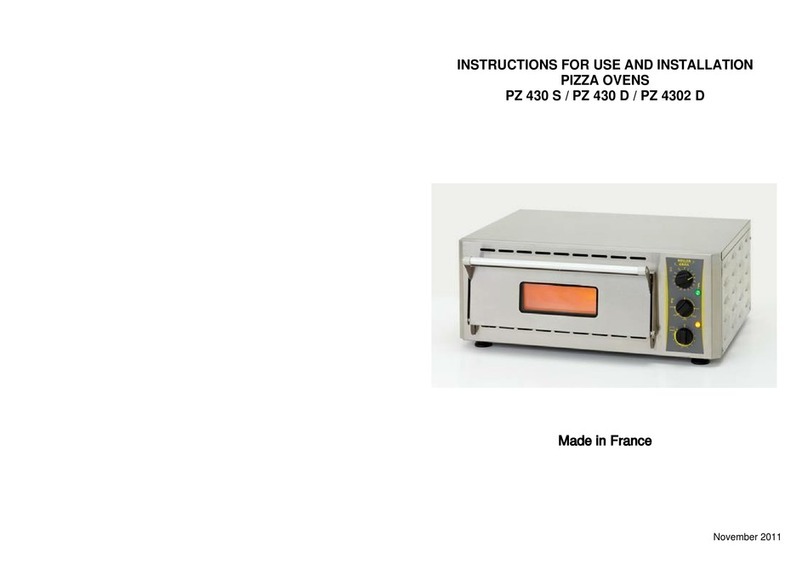
Roller Grill
Roller Grill PZ 430 S Operation manual
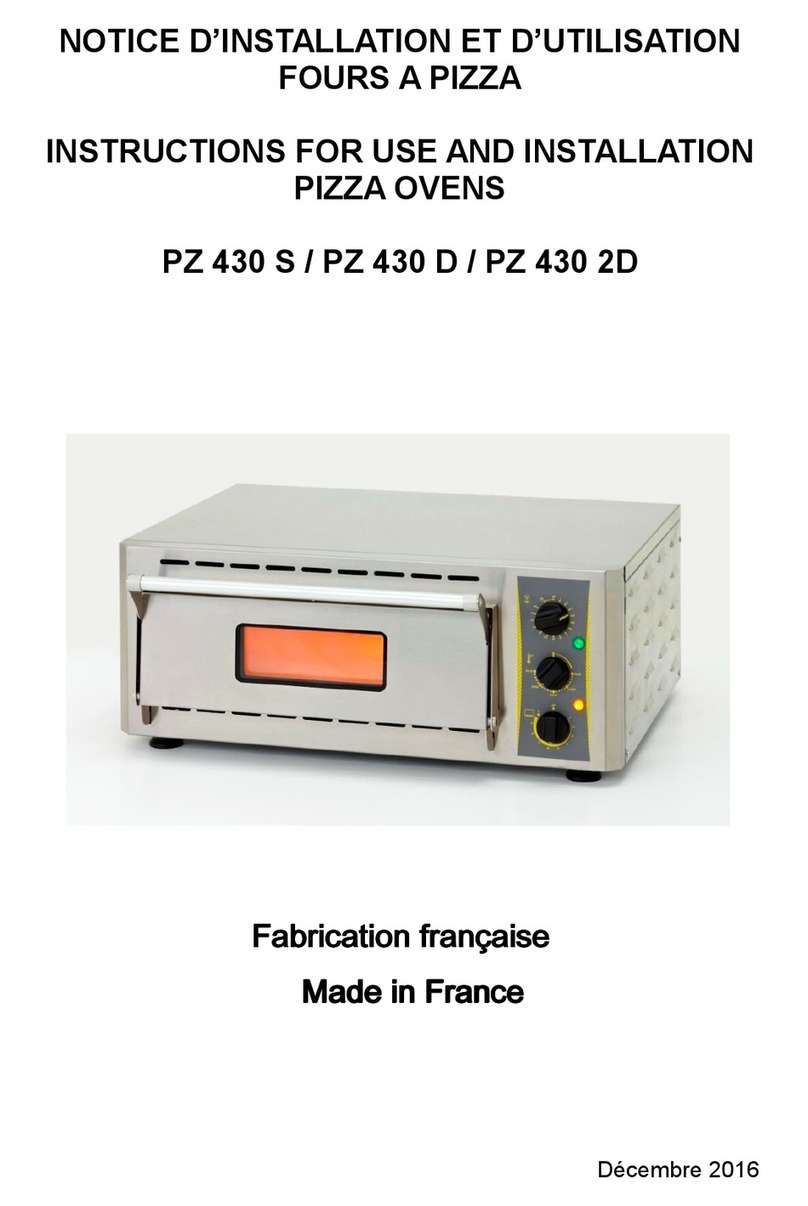
Roller Grill
Roller Grill PZ 430 D Operation manual
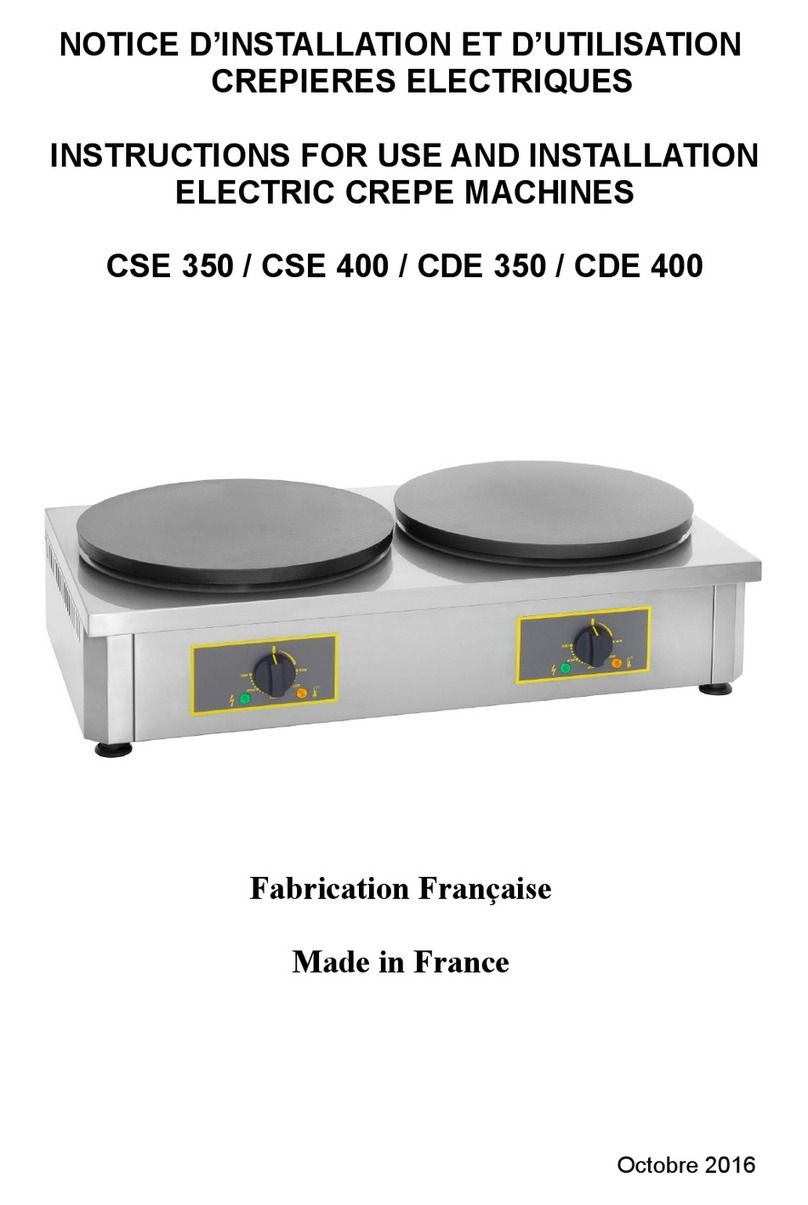
Roller Grill
Roller Grill CSE 350 Operation manual
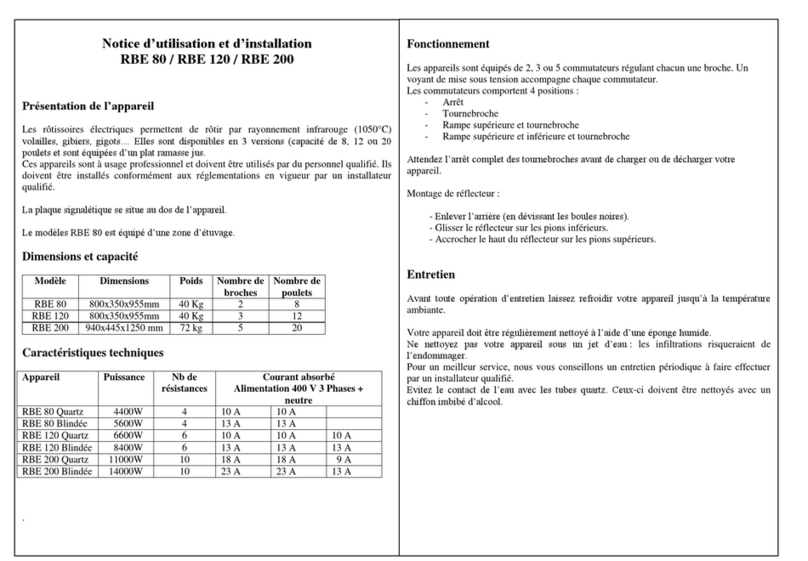
Roller Grill
Roller Grill RBE 80 Operation manual
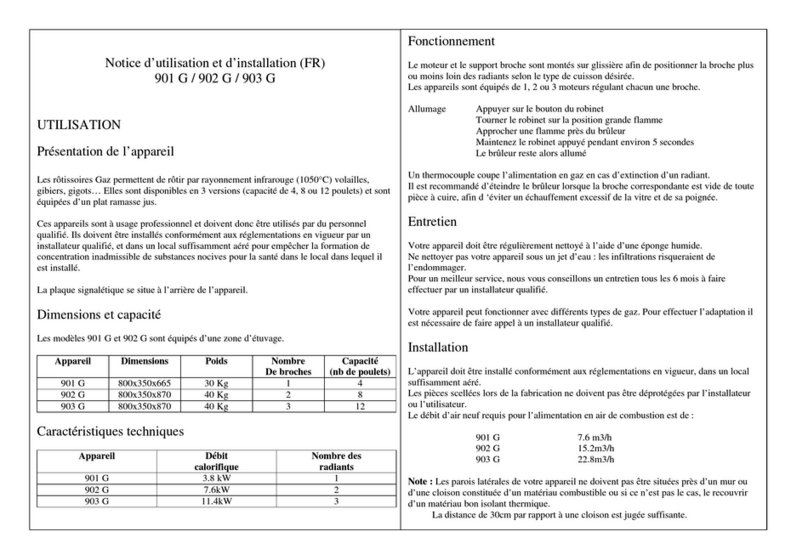
Roller Grill
Roller Grill 901 G Operation manual
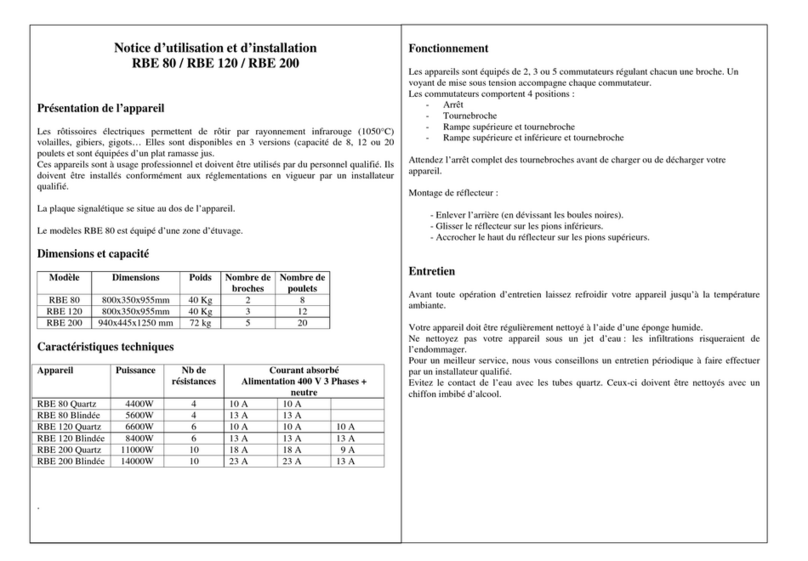
Roller Grill
Roller Grill RBE80Q Operation manual
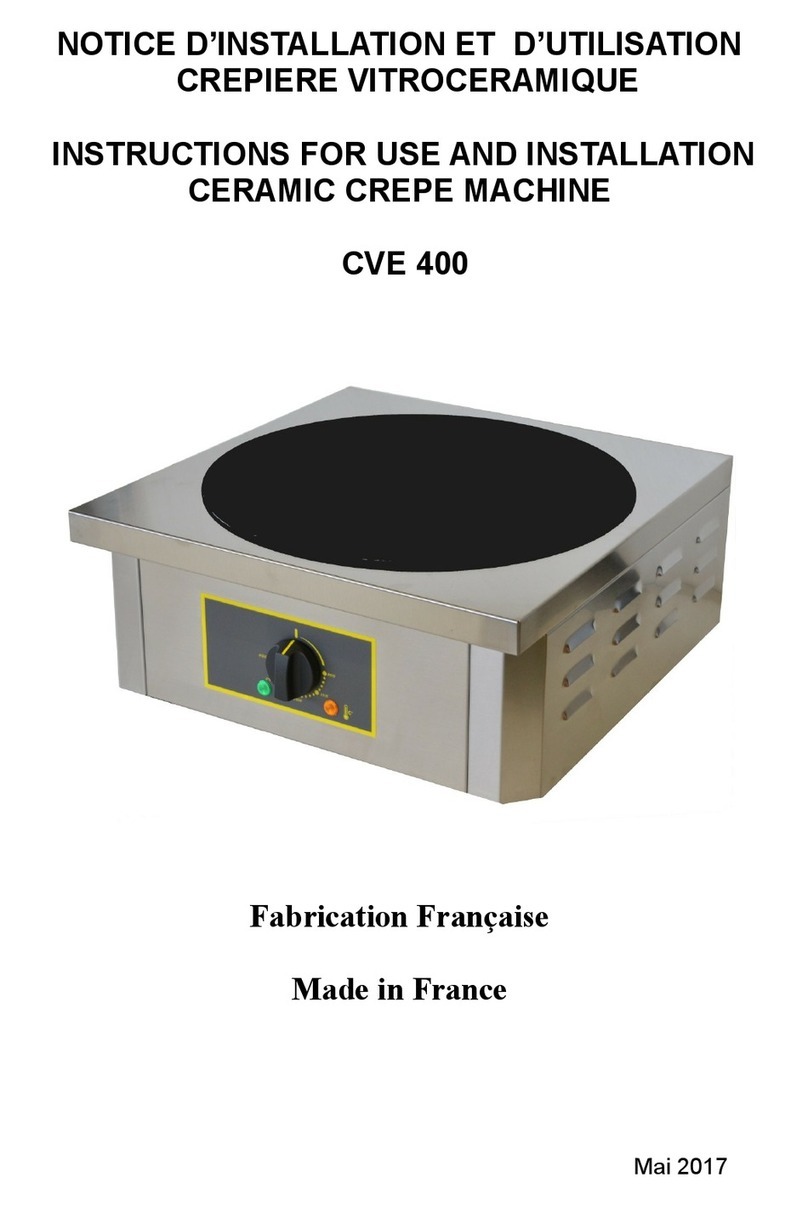
Roller Grill
Roller Grill CVE 400 Operation manual
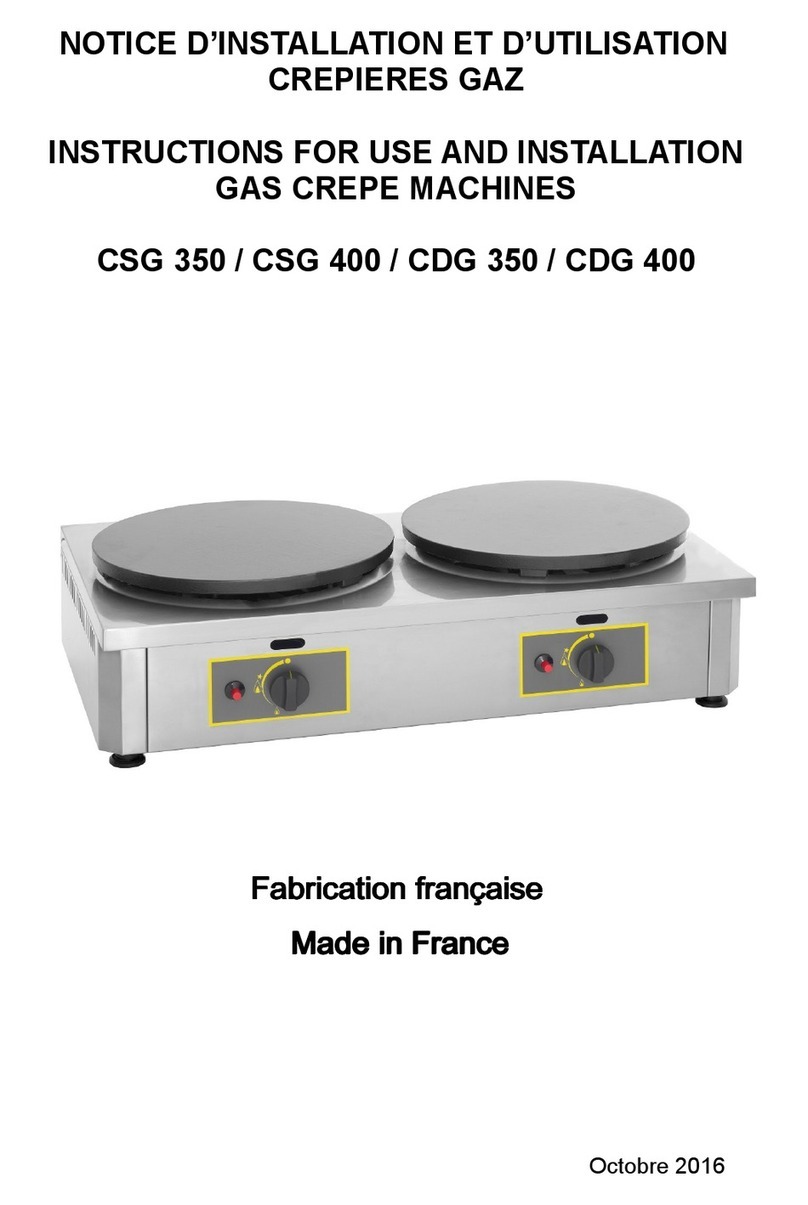
Roller Grill
Roller Grill CSG 400 Operation manual
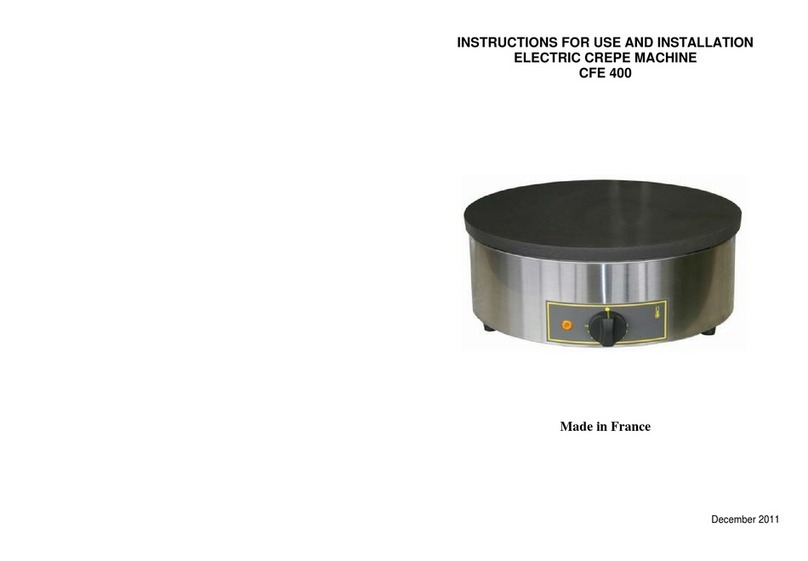
Roller Grill
Roller Grill CFE 400 Operation manual
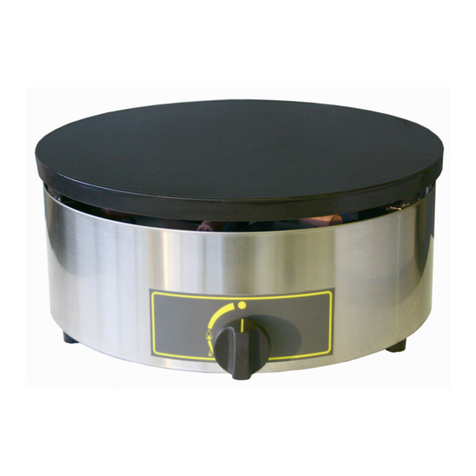
Roller Grill
Roller Grill CFG 400 Operation manual
